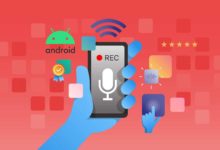What is the Internet of Things?
The Internet of Things (IoT) describes the communication between objects and data transmission to certain servers on the Internet. Objects connected to the Internet are said to be “intelligent” or “smart”. Because of this connection, each device is assigned an IP address in the network, which simplifies the identification of the device. So, every connected device can be managed through the internet. Intelligent devices, for example machines in industry, transmit data, for example about their technical status, so that scheduled maintenance can be planned early in the production process or error messages can be rectified in good time.
In the Internet of Things, the communication between intelligent devices is called machine-to-machine (Eng. “Machine to machine”, abbreviated to M2M). Machines automatically exchange relevant information with one another so that the production process is coordinated accordingly. With the help of this information exchange, customized reactions are carried out so that the production process runs automatically.
Advantages and Potential
With IoT, companies can exploit their potential and increase production. By means of real-time information exchange, IoT offers a new way of increasing productivity, since unexpected failures are reduced, materials are used in a targeted manner and the production process is optimized. The advantages of IoT increase with every further linked machine, because with extensive networking of the entire process, automation using artificial intelligence can provide extensive support to people.
IoT can be used in many areas, industries and with various devices such as smart cities, asset tracking, eHealth and smart metering. You can find more information about the application areas on our website here.
The capabilities of the IoT have limits, which represent the potential of the future. Technical progress strives to improve products, production and, moreover, resource-saving and environmentally friendly production. However, further development of all innovations is necessary in order to meet the current requirements. IoT processes sensitive data of a company and is the interface of all connected devices in the company. This interface becomes a point of attack as criminals read the data on the Internet or take control of the networked machines.
Suitable protective measures are above all a reliable control of access with multi-factor authentication, as well as an encrypted transmission of the data. Networked machines have to work under protection so that an attack remains ineffective.
Development
Kevin Ashton introduced the term “Internet of Things” in 1999 and has been considered the inventor of the IoT ever since. The Internet is seen as global networking through computers and “Things” as objects that are real objects, such as everyday objects.
There is no uniform definition, but what they have in common is that objects create data and communicate with each other via networking. As a kind of definition:
An open and extensive network of intelligent objects that have the ability to convey both information and data
as well as to manage resources automatically, to communicate and to react to changes in the environment. “
1989 – The idea of the Internet was implemented by Tim Berners-Lee for data exchange between different computers and in 1991 the first website on the World Wide Web was online.
1997 – wireless connectivity now offers opportunities for M2M technology. Countless applications from vending machines to telemedicine use analog connectivity until digitalization brings about change in 2010.
1999 – Introduction of the term “Internet of Things” by Kevin Ashton.
2002 – Use of cloud technology, which has also gone through various historical stages of development.
2012 – various further developments up to the networking of cloud computing and the IoT. This cooperation of technologies enables the expansion to further areas of application and strengthens the increased use in private use.
2014 – Expansion of private use for digitization, including smart home systems. In addition, new possibilities for M2M use in the industrial sector, especially with regard to Industry 4.0.
The Industry 4.0 with technical innovation, digitization, intelligent and efficient product manufacturing and global networking to be the future of the economy. The development of technology is rapid, so the industry must change with the new technological possibilities. The objectives of Industry 4.0 are, on the one hand, efficiency, sustainability, process optimization and adaptation to current conditions. Numerous studies show growth for the IoT in the next few years. Companies increase their productivity, save resources and move forward with the change in digitalization. The areas of application of IoT or especially M2M communication are numerous, further information can be found on our application page.






